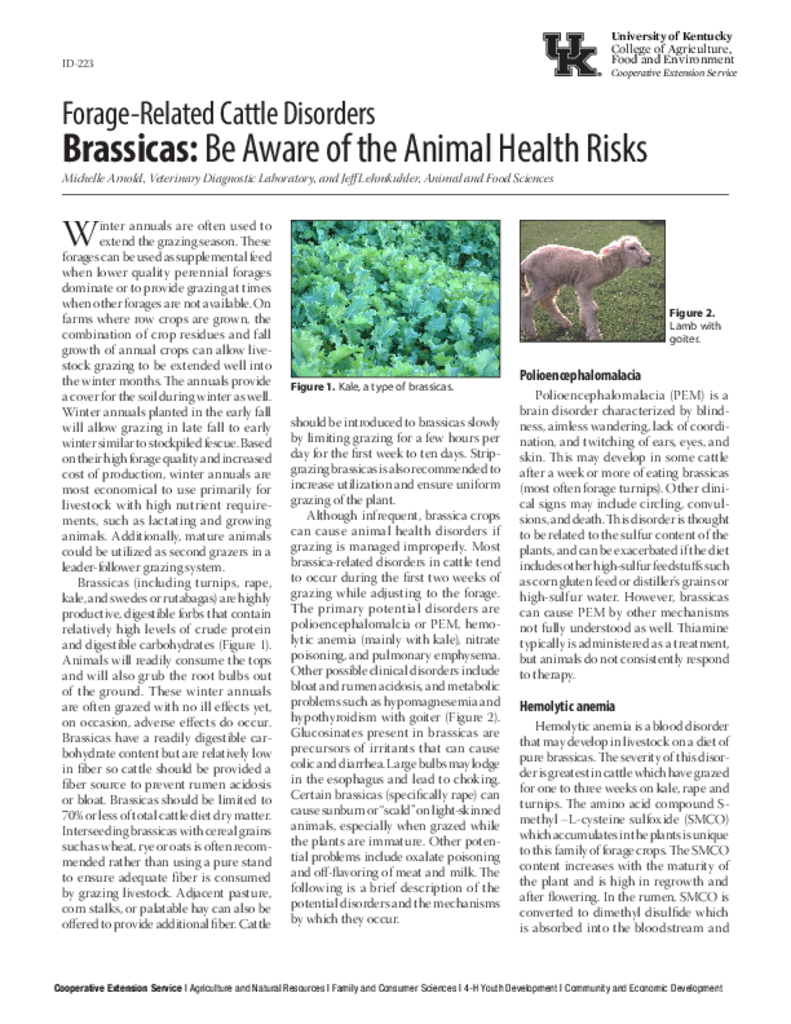Forage-Related Cattle Disorders: Brassicas--Be Aware of the Animal Health Risks
Forage-Related Cattle Disorders: Brassicas--Be Aware of the Animal Health Risks
Abstract
Although infrequent, brassica crops can cause animal health disorders if grazing is managed improperly. Most brassica-related disorders in cattle tend to occur during the first two weeks of grazing while adjusting to the forage. The primary potential disorders are polioencephalomalcia or PEM, hemolytic anemia (mainly with kale), nitrate poisoning, and pulmonary emphysema. Other possible clinical disorders include bloat and rumen acidosis, and metabolic problems such as hypomagnesemia and hypothyroidism with goiter. Glucosinates present in brassicas are precursors of irritants that can cause colic and diarrhea. Large bulbs may lodge in the esophagus and lead to choking. Certain brassicas (specifically rape) can cause sunburn or "scald" on light-skinned animals, especially when grazed while the plants are immature. Other potential problems include oxalate poisoning and off-flavoring of meat and milk.
Core Details
Publication Date
Aug. 12, 2014
Categorical Details
© 2025 University of Kentucky, Martin-Gatton College of Agriculture, Food and Environment

